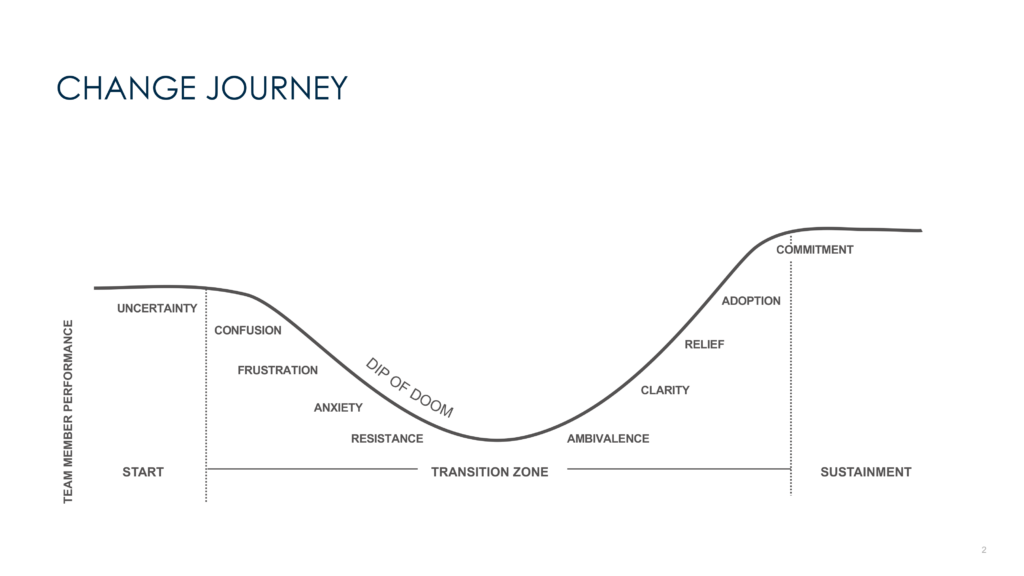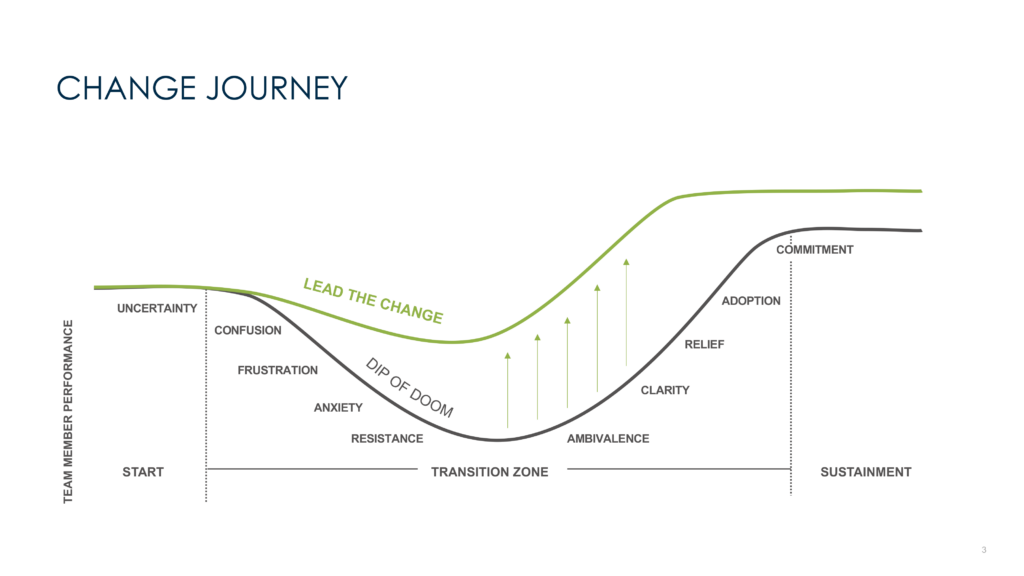
Within every organization, change is inevitable. While change can provide opportunity and innovation, it can also be challenging and met with resistance, uncertainties, and unforeseen obstacles. Every change involves a journey from current state to a future vision, during which we are often faced with a Dip of Doom. Thoughtful strategies can support leaders in navigating through the Dip to achieve the envisioned future.
Imagine this scenario. You open your smartphone to complete a quick task and find your phone has updated. Maybe you cannot quickly find the desired app, or you open the app, and it looks unfamiliar. Suddenly, you are focused on figuring out how to complete the task—rather than the task itself. You may feel frustrated by the challenge, anxious that you will not be able to complete the task, or resigned to finding an alternate solution. Your performance is low, you are experiencing negative feelings, and you are considering abandoning the change. You are in the Dip of Doom.
In its simplest form, the Dip of Doom is the lowest period of performance and emotions during a change journey. It is the period during which enthusiasm and initial momentum wane, and resistance and doubts peak.

When an organization experiences this Dip, leaders may wonder how low performance will slide. How long will the team experience this slump? Will the team move out of the Dip to adopt the change? Will the change put my organization at risk of losing team members?

Leaders have an opportunity to guide their team through the change to lessen the Dip of Doom. We can create solutions to diminish the performance and emotional downturn, to move through the Dip faster, and to experience enhanced change adoption and performance as the team moves past the Dip.
Here are some best practices we’ve had success with when helping our customers minimize the Dip of Doom:
- Identify resistors and involve them in the change. Engage your frequent resistors, along with others resistant to the specific change, on the change project team. Make them early adopters or formally solicit their feedback. Making them part of the solution will help them embrace the change, lessen their Dip, and decrease the risk they will pull others into the Dip with them.
- Be transparent and set realistic expectations. Avoid the temptation of only sharing the benefits of the change. Acknowledge what is challenging and share what you know—and what you don’t know. Communicate frequently to build trust, manage expectations, and keep the team informed.
- Encourage experimentation and discovery. Provide opportunities for individuals to experiment with the change, take risks, and find new solutions. Creating space for individuals to engage with the change can help move them past resistance to recognizing the change’s value.
- Celebrate wins and milestones. Acknowledge and celebrate milestones, successes, and achievements along the change journey. Recognize and reward individuals and teams for their efforts, fostering a positive and encouraging environment. This can help reignite enthusiasm and motivation during the Dip of Doom.
- Adapt and learn: Embrace a mindset of continuous improvement and flexibility. Evaluate feedback, identify areas for improvement, and refine the change strategy. Learning from challenges and setbacks can lead to a stronger, more resilient change process.
Change initiatives can be a daunting task for organizations, but with the right strategies in place they don’t have to be. By understanding the Dip of Doom and putting effective change strategies in place, you can ensure a successful transition period for your team and organization.


